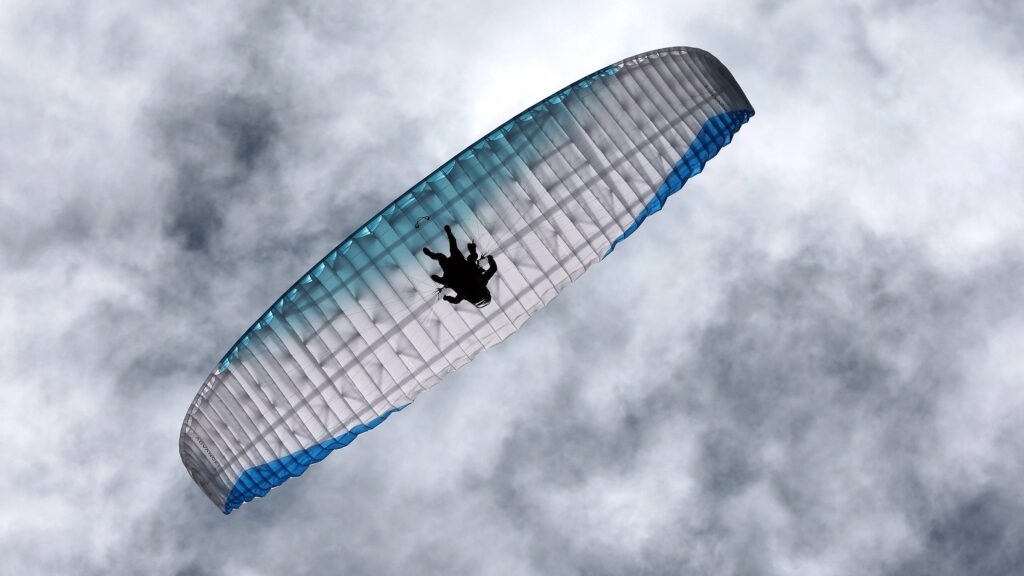Pete Thompson flew 190 miles over western Colorado by harnessing updrafts and wind. It’s believed to be a record-breaking flight.
(Photo: Karl-Josef Hildenbrand/picture alliance via Getty Images)
Published August 22, 2025 02:13PM
A Colorado man recently stayed aloft in a paraglider for a shocking ten hours and five minutes, according to The Aspen Times. That’s long enough to watch the entire first season of Game of Thrones.
Pete Thompson, who lives in the nearby town of Carbondale, has been paragliding for over 20 years. His flight on August 20, which is believed to have set a record for triangular distance, covered 190 miles.
“A big distance paragliding flight is like taking a row boat out into the ocean and having to quest a huge distance and land on another island,” he told the Aspen Times. “You’re taking a craft that’s small and slow, and trying to do an incredible feat by harnessing the power of what’s there.”
Thompson launched his paraglider, or “wing,” from a ski trail on 11,212-foot Aspen Mountain and then flew a triangular course, first west, to the end of the Grand Mesa, then northeast to the Flat Tops Wilderness Area north of Glenwood Springs, and finally back southeast towards Aspen, landing at the North Star Nature Preserve. Triangular flights like these, starting and ending in roughly the same location, are generally considered significantly more challenging than a one-way flight.
Paragliding can also be practiced with motorized paragliders (called paramotors), but unpowered wings like Thompson’s rely entirely on wind to stay aloft. These wings—inflatable pieces of aerodynamic fabric—look a lot like parachutes, but rather than merely slowing a fall, they’re designed to generate upward lift and forward motion. In fact, they can travel up to 50 miles an hour. Thompson said staying in the air as a paraglider pilot, and certainly for as long as he did, was a constant effort, entailing “hundreds of moves and hundreds of decisions.”
Chiefly, these moves entail chasing thermal updrafts. These buoyant columns of air occur because the sun unevenly heats Earth’s surface, and air above warmer spots becomes less dense, rising in columns. Thompson told the Times that when flying, he “looks for sunny mountain faces, south-facing basins, and the air under cumulus clouds” because these regions are likely to harbor that warmer, less dense air that will keep him aloft.
Just as thermals are pockets of rising warm air, downdrafts are areas where cooler, denser air is sinking. Unfortunately for pilots in Colorado, downdrafts are far more common. “Maybe 5 percent of the air that’s out there is rising, 45 percent is neutral, and 50 percent is sinking,” Thompson explained. “The flying here is not very user-friendly for big flights,” he added.
Beyond parsing the sky for thermals and downdrafts, Thompson said paragliders have to be wary of strong winds, which can carry pilots off-course. Because of this, Thompson packs a backcountry kit with him each time he flies, in case he is forced down in a remote wilderness region and has to hike out. A sky filled with fluffy, flat-bottomed cumulus clouds is a good sign of mellow winds. “We’re the little row boats of the sky, and we need good conditions to go out in the big ocean,” he explained.
According to the World Air Sports Federation—the governing body for paragliding, skydiving, hot air ballooning, and other aerial sports—the longest distance ever traveled in a paraglider is 379 miles, by Sebastien Kayrouz, over the Caprock Escarpment of Texas in 2021.


